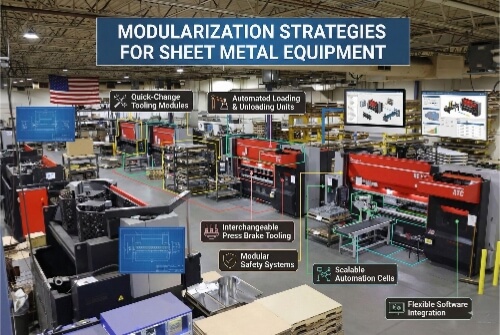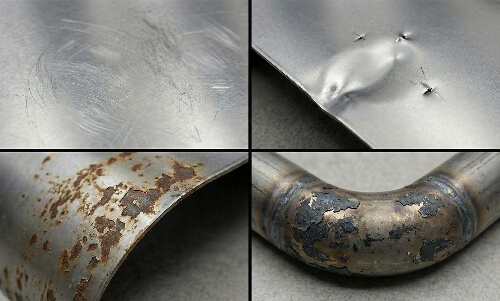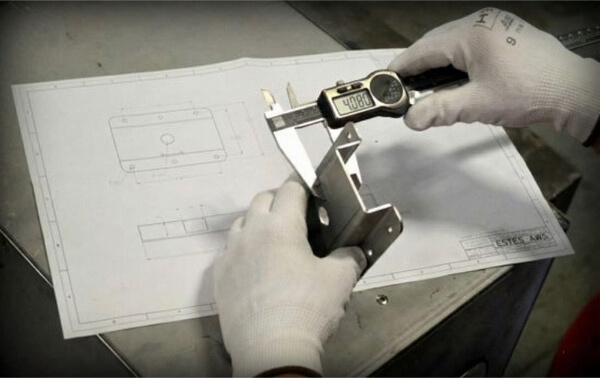O titânio é conhecido pela sua durabilidade e versatilidade, tornando-o um material popular nas indústrias aeroespacial, médica e automóvel. No entanto, o corte de titânio apresenta desafios. A sua elevada força, resistência ao calor e baixa condutividade térmica tornam-no mais difícil de cortar do que muitos outros metais. Os fabricantes têm de utilizar métodos especializados para garantir a precisão e preservar a integridade do material.
O corte de titânio requer métodos específicos devido à sua dureza e sensibilidade ao calor. As técnicas mais comuns incluem o corte a laser, o corte por jato de água, o corte por plasma, a maquinação CNC e a maquinação por descarga eléctrica. Cada método tem vantagens e desafios, pelo que é importante selecionar o método certo com base nas suas necessidades específicas.
A escolha do método de corte correto é essencial para os fabricantes que pretendem manter a eficiência e controlar os custos. Vamos explorar estes processos populares de corte de titânio.
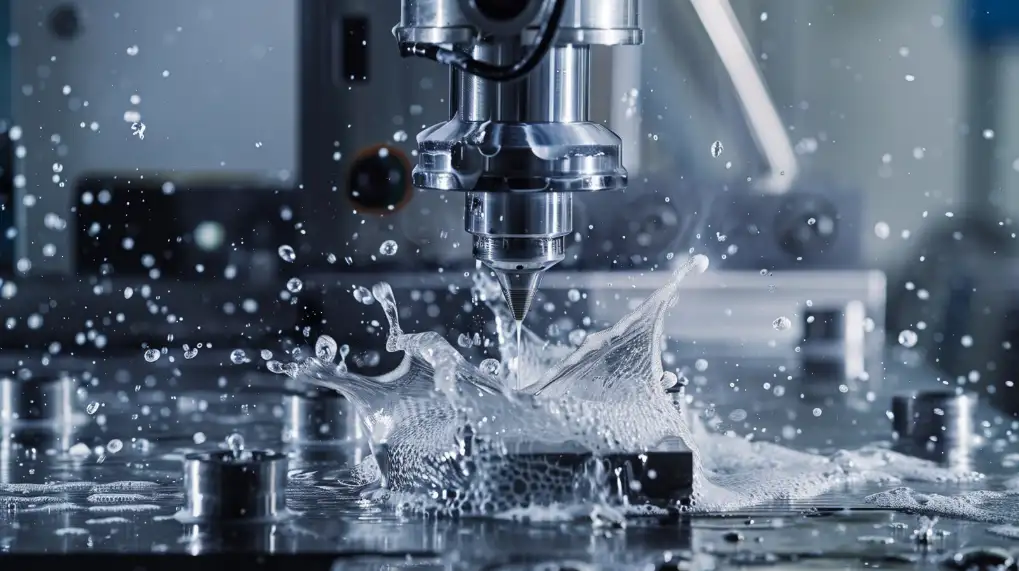
O que é o corte de titânio?
O corte de titânio consiste em moldar ou modificar o material de titânio utilizando diferentes técnicas. Estes métodos incluem o corte a laser, o corte por jato de água e o corte mecânico. O método escolhido depende da espessura e das necessidades específicas da peça de titânio. O principal objetivo é fazer cortes limpos e precisos sem danificar o material.
Porque é que o titânio é tão difícil de cortar?
O titânio é difícil de cortar porque é um material forte e sensível ao calor. Tem de ser cortado a baixas temperaturas para obter os melhores resultados. O titânio absorve o calor rapidamente, o que pode causar deformações ou descoloração se não for cuidadosamente gerido. A sua dureza também leva a um desgaste mais rápido da ferramenta. Isto requer ferramentas e métodos especializados para manter a exatidão e a precisão durante o corte.
Caraterísticas do titânio
O titânio é um metal forte e leve, frequentemente utilizado nas indústrias aeroespacial e médica. Resiste à corrosão e pode suportar temperaturas elevadas. No entanto, a sua resistência torna-o difícil de cortar.
A dureza do titânio torna o seu corte difícil. Requer ferramentas especiais, uma vez que os métodos de corte normais se desgastam rapidamente. Se não for cortado corretamente, o metal pode deformar-se ou rachar. Os operadores devem controlar cuidadosamente a velocidade e a pressão de corte.
O titânio também absorve facilmente o calor. Este calor pode provocar a deformação do material durante o corte. Métodos como o corte a jato de água evitam este problema, enquanto o corte a laser necessita de um controlo cuidadoso do calor para evitar danos.
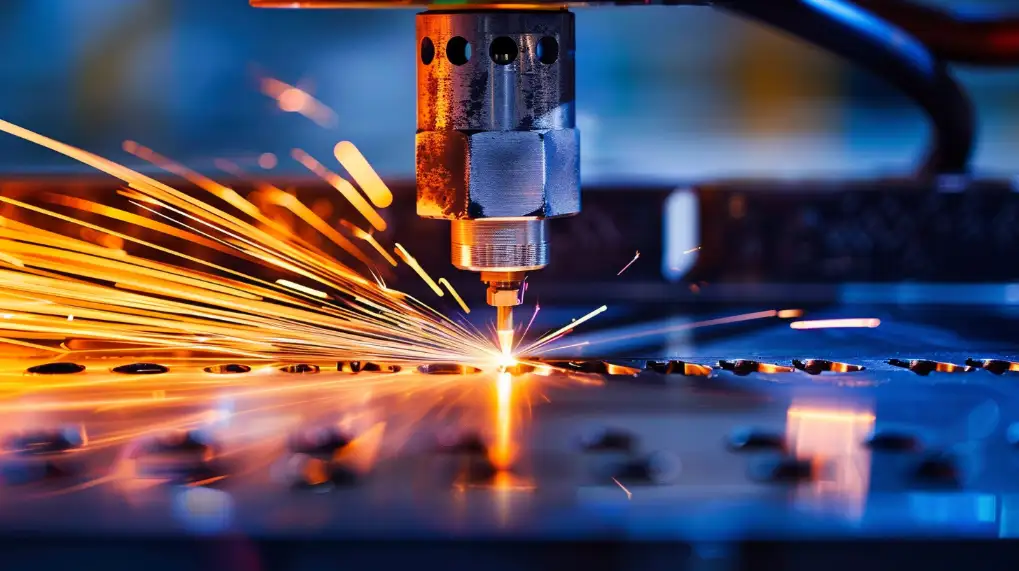
Como cortar titânio? Métodos comuns
O corte de titânio requer uma análise cuidadosa devido à sua força e sensibilidade ao calor. De seguida, descreverei alguns métodos comuns de corte de titânio.
Corte a laser
Vantagens do corte a laser de titânio
Corte a laser proporciona arestas precisas e limpas. Permite efetuar cortes detalhados e formas complexas com um mínimo de desperdício de material. O feixe de laser focado garante precisão, mesmo com chapas de titânio espessas.
Desafios e considerações sobre o corte a laser
O corte a laser de titânio requer uma gestão cuidadosa do calor. O titânio absorve facilmente o calor, o que pode causar deformações ou descoloração se não for controlado. São frequentemente utilizados gases especiais, como o nitrogénio, para evitar a oxidação, mas isto aumenta a complexidade do processo.
Corte a jato de água
Precisão e limpeza do corte por jato de água
Corte com jato de água utiliza água a alta pressão, por vezes com partículas abrasivas, para cortar o titânio. Este método permite efetuar cortes precisos e limpos sem gerar calor. É ótimo para evitar a distorção do material, especialmente em peças de titânio mais finas.
Quando escolher o corte por jato de água para titânio?
O corte por jato de água é ideal para o titânio quando os danos causados pelo calor são uma preocupação ou quando são necessárias arestas suaves e limpas. É excelente para peças com formas complexas e tolerâncias apertadas, especialmente com chapas de titânio mais finas.
Corte Plasma
Visão geral do corte a plasma
Corte a plasma utiliza um jato de gás ionizado (plasma) para cortar metais como o titânio. A alta temperatura do plasma derrete o material, que é depois soprado. O corte por plasma é mais rápido do que o corte a laser, mas tende a ser menos preciso.
Limitações do corte por plasma
O corte por plasma funciona bem para chapas de titânio mais espessas, mas pode deixar arestas ásperas. Gera muito calor, afectando as propriedades e o acabamento do material. Este método não é ideal para cortes precisos ou complexos, especialmente em titânio mais fino.
Maquinação CNC
Visão geral da maquinagem CNC para titânio
Maquinação CNC utiliza máquinas controladas por computador para moldar o titânio através da remoção de material. É altamente versátil, permitindo formas complexas e tolerâncias apertadas. A maquinagem CNC é utilizada tanto em prototipagem e produção em massa.
Vantagens e precisão da maquinagem CNC
A maquinagem CNC oferece elevada precisão e repetibilidade. Pode criar caraterísticas detalhadas como furos, ranhuras e contornos. Este método é o melhor para projectos que requerem detalhes finos e precisão dimensional em grandes quantidades.
Técnicas CNC comuns para o corte de titânio
As técnicas comuns de CNC incluem viragem, fresageme perfuração. Cada método é adequado a diferentes aplicações, consoante o tamanho e a forma da peça. As máquinas CNC utilizam várias ferramentas para lidar com a dureza do titânio e alcançar o acabamento desejado.
Usinagem por Descarga Elétrica (EDM)
Como funciona a EDM para titânio?
EDM utiliza faíscas eléctricas para remover pequenas quantidades de titânio da peça de trabalho. Uma descarga eléctrica controlada entre a ferramenta e a peça de trabalho corrói o material. Este método é ótimo para formas complexas que são difíceis de maquinar com os métodos tradicionais.
Principais vantagens e desvantagens da EDM para titânio
O EDM proporciona uma elevada precisão, tornando-o perfeito para desenhos complexos e áreas de difícil acesso. No entanto, pode ser mais lento do que outros métodos. O processo também gera calor que pode afetar as propriedades do material. O EDM é melhor para peças com detalhes finos ou tolerâncias elevadas.
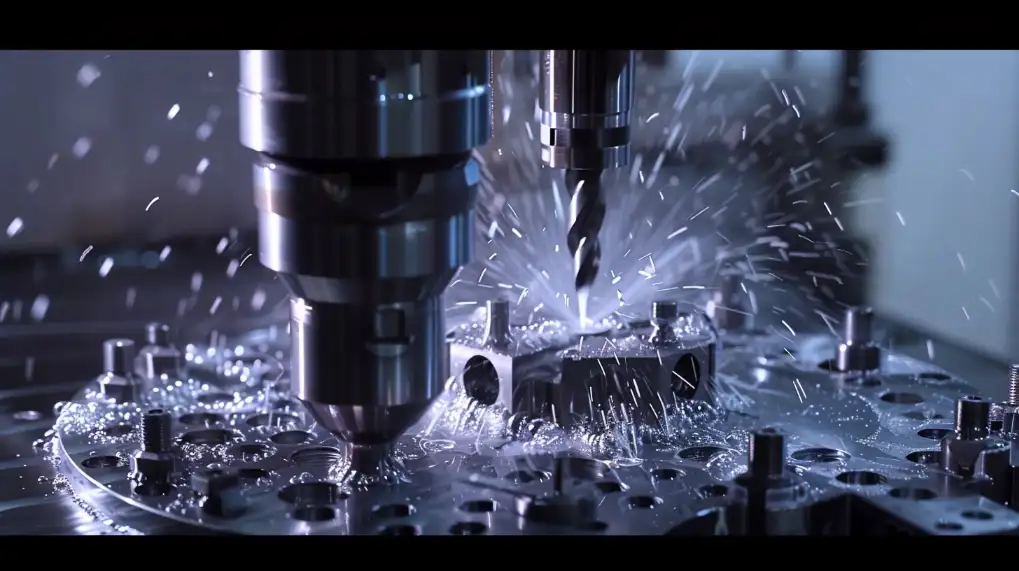
Factores que influenciam o corte de titânio
O corte de titânio requer uma cuidadosa consideração de vários factores. Estes factores têm impacto na escolha do método de corte e na qualidade do resultado final. Vamos examinar os principais factores que afectam o corte de titânio.
Grau do material
O titânio existe em diferentes graus, cada um com propriedades únicas que influenciam a facilidade com que pode ser cortado. Por exemplo, as ligas de titânio de grau comercial são mais fáceis de cortar do que as ligas avançadas como o grau 5 (Ti-6Al-4V). O grau afecta o tipo de ferramentas necessárias, a velocidade de corte e as taxas de avanço.
Velocidade de corte e avanço
A velocidade de corte e a taxa de avanço são cruciais para obter um bom corte. Cortar demasiado rápido pode criar calor excessivo, levando à deformação do material ou ao desgaste da ferramenta. Uma velocidade mais lenta combinada com a taxa de avanço correta resulta em cortes mais suaves e reduz a tensão na ferramenta.
Seleção de ferramentas
A escolha da ferramenta correta é vital para o corte de titânio. Devido à dureza do titânio, as ferramentas de carboneto ou revestidas são geralmente preferidas. Estas ferramentas mantêm-se afiadas durante mais tempo e são mais resistentes ao desgaste. As ferramentas afiadas também reduzem as forças de corte e ajudam a evitar a acumulação de calor na aresta de corte.
Gerenciamento de calor
O titânio absorve muito calor durante o corte. Se não for gerido corretamente, pode causar distorção, descoloração ou falha da ferramenta. A utilização de fluidos de arrefecimento ou a seleção de velocidades de corte mais lentas são formas eficazes de controlar o calor e obter melhores resultados.
Rigidez da Máquina
A rigidez da máquina de corte é essencial para um corte preciso. Se a máquina não for suficientemente rígida, podem ocorrer vibrações que afectam a qualidade do corte. Uma configuração estável e de elevada rigidez da máquina garante uma melhor precisão e prolonga a vida útil da máquina e da ferramenta.
Desafios e soluções no corte de titânio
Devido às suas propriedades únicas, o corte de titânio apresenta vários desafios. No entanto, a compreensão destes desafios e das suas soluções pode ajudar a melhorar o processo de corte e garantir resultados de elevada qualidade.
Deformação e distorção de materiais
O titânio é propenso a deformações e distorções durante o corte, especialmente quando o calor não é corretamente controlado. A sua elevada relação resistência/peso pode levar a deformações se o processo de corte não for gerido cuidadosamente.
Solução:
Para reduzir a deformação, utilize métodos de baixa velocidade, como o corte por jato de água ou por laser. O corte por jato de água elimina o calor, evitando a distorção térmica. Além disso, as técnicas de fixação e de fixação para estabilizar o material durante o corte podem ajudar a evitar a flexão e a deformação.
O elevado custo do titânio e o seu efeito nas opções de corte
O titânio é mais caro do que muitos outros metais, o que aumenta os custos de produção. A necessidade de ferramentas e métodos de corte especializados aumenta a despesa, especialmente para peças de grande escala ou de precisão.
Solução:
Os fabricantes devem escolher métodos de corte que equilibrem a precisão com o desperdício de material para gerir os custos. O corte a laser, por exemplo, oferece uma elevada precisão com um mínimo de desperdício. Técnicas avançadas como a EDM também podem reduzir a necessidade de pós-processamento, poupando tempo e dinheiro a longo prazo.
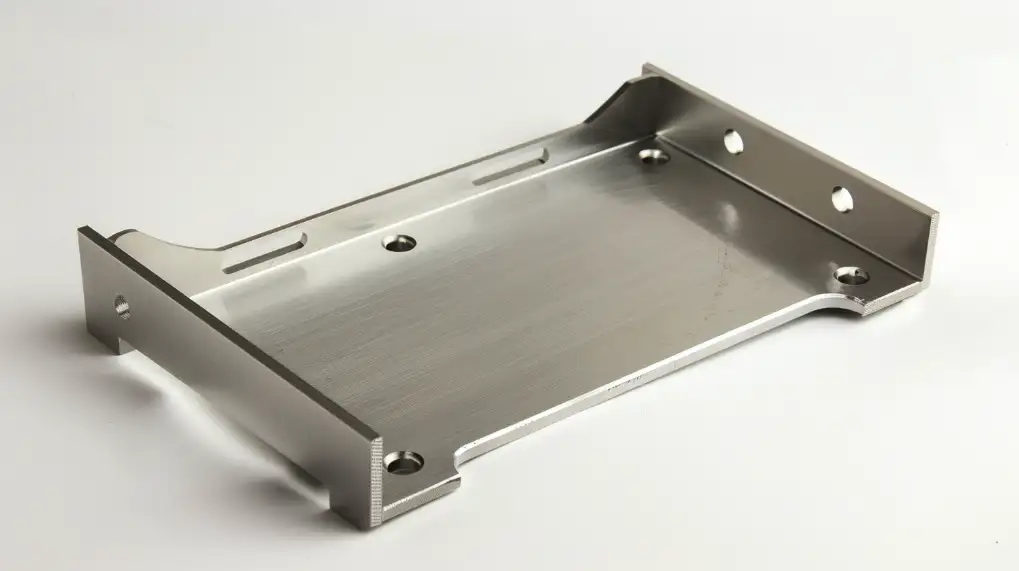
Aplicações do corte de titânio
A força, leveza e resistência à corrosão do titânio fazem dele um material crucial em muitas indústrias. Abaixo estão algumas aplicações chave onde o corte de titânio garante precisão, desempenho e durabilidade.
Indústria aeroespacial
O titânio é amplamente utilizado na indústria aeroespacial para componentes como lâminas de turbinas, peças de motores e estruturas de fuselagem. A sua relação resistência/peso permite-lhe suportar tensões extremas e temperaturas elevadas.
Dispositivos Médicos e Implantes
A biocompatibilidade única do titânio torna-o inestimável no sector da saúde. É utilizado em implantes, próteses e instrumentos cirúrgicos.
Automóvel e desportos motorizados
Em aplicações para automóveis e desportos motorizados, o titânio é utilizado em componentes como sistemas de escape, válvulas e peças de suspensão. As suas propriedades de leveza e elevada resistência reduzem o peso do veículo, melhorando o desempenho e a eficiência do combustível.
Indústria Marinha
A resistência do titânio à corrosão torna-o ideal para aplicações marítimas, tais como cascos de navios, hélices e plataformas offshore expostas à água do mar. A sua durabilidade e resistência ao ambiente marinho adverso fazem dele um material preferido.
Conclusão
Devido à sua dureza, sensibilidade ao calor e custo elevado, o corte de titânio requer técnicas especializadas. A escolha do processo de corte correto é essencial para obter resultados precisos e de alta qualidade, minimizando o desperdício de material e o desgaste da ferramenta.
Precisa de ajuda com as suas necessidades de corte de titânio? Contate-nos hoje para discutir o seu projeto e encontrar a solução perfeita adaptada às suas necessidades!
Mais recursos:
Versatilidade do Titânio – Fonte: Titek
Compreendendo a integridade material – Fonte: Thermofisher
Olá, chamo-me Kevin Lee

Nos últimos 10 anos, tenho estado imerso em várias formas de fabrico de chapas metálicas, partilhando aqui ideias interessantes a partir das minhas experiências em diversas oficinas.
Entrar em contacto

Kevin Lee
Tenho mais de dez anos de experiência profissional no fabrico de chapas metálicas, especializando-me em corte a laser, dobragem, soldadura e técnicas de tratamento de superfícies. Como Diretor Técnico da Shengen, estou empenhado em resolver desafios complexos de fabrico e em promover a inovação e a qualidade em cada projeto.


